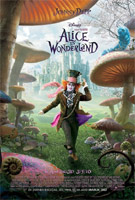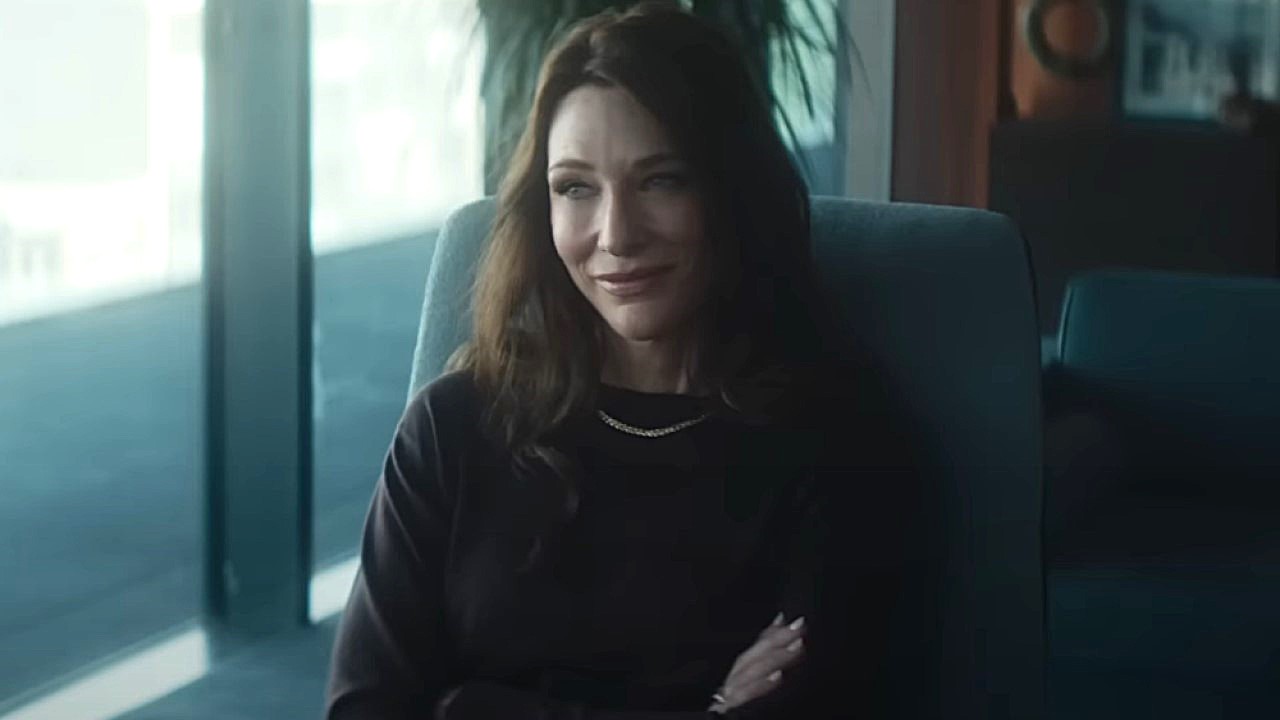When asked about the challenges of turning such an iconic story into a movie, Alice in Wonderland director Tim Burton responded this way: “I didn’t feel like there was a definitive version to me that we were fighting against.” He’s right. As much as Alice is an indelible part of our cultural consciousness, it’s not a clearly defined part. Everyone knows Alice in Wonderland, but how well do most people truly know the story? For most Alice in Wonderland is more a series of iconic images than a complete narrative. You think of Alice falling down the rabbit hole, or her conversation with the caterpillar. You think of the Cheshire Cat’s grin, or the Mad Hatter seated at his eternal tea party. All of these things are in Tim Burton’s movie but he’s used them to craft something entirely different.
The thing is Lewis Carroll’s original 1865 novel “Alice’s Adventures in Wonderland” is more a series of random scenes in which a little girl wanders from one moment of insanity to the next. There’s no real purpose to any of it beyond the relaying of some kid’s overly imaginative dream. Yet those scenes are so visceral, so imaginative, and so alive that Hollywood has been unable to resist attempting to cobble them together into a true narrative over and over again. The closest anyone’s ever come to a definitive version before Burton’s is the 1951 animated movie which, not so coincidentally, was also done by Disney.
Burton's movie avoids the impossible task of creating a real story out of Carroll’s book by ditching it entirely. This Alice is not an adaptation of Carroll’s novel, at least not exactly. Instead the classic Alice you have swimming around in your head is used as back story. This filmmaker takes advantage of how indelibly those images are already rooted in our heads and uses them to give his tale a rich and layered history which we know without him telling it. It’s the right move, the only way a movie like this ever really could have worked, and because of it, work this Alice in Wonderland does.
Burton’s Alice is more of a sequel to, than a retelling. It stars Mia Wasikowska as a nearly twenty-year-old Alice and we meet her on the eve of her unwilling engagement to a ginger-haired fop. When he pops the question, she runs off into the bushes in pursuit of what appears to be a rabbit wearing clothes. She falls down a hole and ends up in a world called Underland (I hear it’s an over the hills and under land), a place she’s been before as a little girl, mistakenly called Wonderland, and then forgotten. Now she’s back and embroiled in an epic prophecy which promises she’ll save everyone from the Red Queen’s machinations, but is this Alice “the” Alice? While we wait to find out, Burton has a lot of fun taking us through a world full of hookah smoking caterpillars and large mushrooms. Yet while there’s plenty of bizarre scenery, the focus here is always on the characters and, no matter how nuts Wonderland gets, you’ve got something or rather someone, to latch on to.
Mia, despite being a relative newcomer, accomplishes something other more seasoned actors have been utterly unable to pull off: She goes toe to toe with Johnny Depp, and bests him. Though the Mad Hatter is a relatively minor placeholder in Carroll’s story, this time he’s a central figure with Depp finding his way into nearly every frame. Johnny’s performance is an improvement over the last time he did a popular kid’s story with Tim Burton, at least the Hatter doesn’t seem like a pedophile, but this character is no Captain Jack Sparrow. Depp’s Hatter is more quirky than mad and unusually tortured for a man who chose a life making novelty headwear. Depp gets screen time and wastes a lot of it, making it easy for Mia’s Alice to remain firmly entrenched as the real person of interest in Underland. Standing next to Wasikowska, Depp’s slightly out of sync performance is forgivable.
Less forgivable is the movie’s dialogue. Linda Woolverton’s script has the right ideas and puts them in the right order; it’s only moment to moment that it doesn’t always make sense. Her screenplay is packed with overlong words and nonsensical made-up names which soon outlive their usefulness. Conversational silliness has always been a part of the Wonderland world but Woolverton heaps even more linguistical weirdness on top of what’s already there, creating mass confusion. Far too often her characters’ conversations play out as meaningless, indecipherable nonsense. Couldn’t we have just called the Mad Hatter the Mad Hatter? Does anyone care that he’s called… whatever that long name everyone calls him is? Frankly, I don’t remember any of it and the words coming out of their mouths soon become mostly background noise as the story moves on with or without Alice’s empty prose. That’s alright, as for words, Alice in Wonderland doesn’t really need them.
The main thing here is that unlike any other version of Alice, it’s all leading somewhere. In this case that somewhere is more than just defeating a wicked queen. Though at times it goes about it rather clumsily, Alice is a movie about self-confidence and independence. It’s a feminist film to the core, with a strong female heroine who gets the confidence she needs to achieve in the real world by first discovering her muchness in a fantasy one. Alice succeeds through sheer bravery and willpower and when I say succeed, I don’t mean she succeeds at finding love or getting the right man, or any of the other things that even the most modern female heroes are so often relegated to. Alice goes out into the world and decides to take it by the horns, on her own terms. When was the last time you saw a movie any movie which let any woman, let alone a children’s movie set in a world of corsets and arranged marriages, do that? In a world of Katherine Heigls and romance obsessed Disney princesses, it’s incredibly rare. Alice doesn’t seem to know that and so she straps on her armor, takes on the Jabberwocky, and tells romance to drop dead.
In the process of going somewhere, Alice in Wonderland manages to look fantastic. Note that I didn’t say realistic. Burton’s movie is, without question, primarily a cartoon. It’s helped along by a few extremely talented actors carefully inserted into the animation, but realism is not the goal here. Instead Burton has created one of the most lush, verdant cartoon worlds yet seen and then proceeds to have a lot of fun with it. Admittedly, this doesn’t always work. Watching the Cheshire Cat ooze and dissolve his way across the screen is a consistent treat. Watching Crispin Glover’s naturally freakish movements wasted inside a stiff, possibly computer generated, suit of armor less so.
Yet if you’re watching it in 3D you may not notice Crispin Glover’s awkwardness. You’ll be busy trying not to duck. While movies like Avatar have been pushing to make their 3D usage more understated, Alice in Wonderland takes an if we’ve got it, might as well use it approach to the format. Sure it adds depth to even the most mundane moments but they’re not shy about letting flying things dance over the audience or throwing teacups in your face until you flinch. Cheesy? Maybe, but at least you’re getting your money’s worth. They pull it off skillfully, with warmth and charm, as if they’re inviting Burton and his cast are letting us in on their secret fun.
Maybe it wouldn’t work if Alice were longer, 3D becomes tedious after a couple hours, but Wonderland clocks in at a briskly paced 108 minutes. Avatar is the same movie whether or not you see it in 3D. Alice in Wonderland absolutely is not. Audiences are paying extra for those glasses, why not make it worth their while? Despite its flaws, Wonderland is stuffed with more minute to minute amusement than you’re likely to get in anything else drifting through theaters, in or out of the third dimension.












